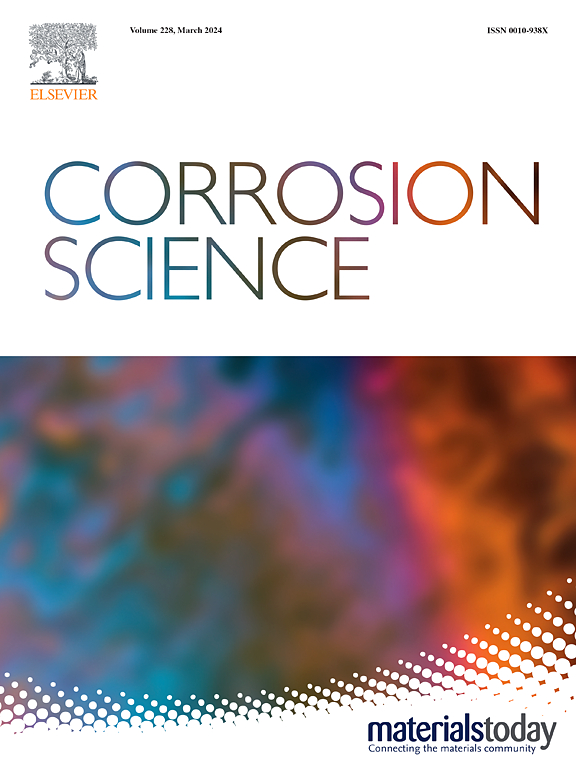Effect of discharge thermal action in ECDM on electrochemical behaviours of matrix material and its recast layer in glycol-based solution
IF 7.4
1区 材料科学
Q1 MATERIALS SCIENCE, MULTIDISCIPLINARY
引用次数: 0
Abstract
The interaction between thermal and electrochemical corrosion in the ECDM process remains unclear. This study clarifies the effect of discharge thermal action on electrochemical corrosion. Real-time temperature curves indicate that the solution temperature in the electrochemical corrosion zone increased significantly due to discharge thermal action. The corrosion resistance of the recast layer’s passive film is superior to that of the matrix due to the enrichment of Cr2O3. As the electrolyte temperature rises, the passive film thickens but shows lower polarization resistances and poorer corrosion resistance due to a loose and weak structure. The matrix material and its recast layer dissolved uniformly, resulting in a considerably flat surface in a glycol-based solution, with enhanced levelling efficiency due to discharge thermal action.
电致发光陶瓷中的放电热作用对乙二醇基溶液中基体材料及其重铸层电化学行为的影响
在 ECDM 过程中,热腐蚀与电化学腐蚀之间的相互作用仍不明确。本研究阐明了放电热作用对电化学腐蚀的影响。实时温度曲线表明,由于放电热作用,电化学腐蚀区的溶液温度显著升高。由于富集了 Cr2O3,再铸层被动膜的耐腐蚀性优于基体。随着电解液温度的升高,被动膜会变厚,但由于结构松散薄弱,极化电阻较低,耐腐蚀性较差。基体材料及其重铸层均匀溶解,在乙二醇基溶液中形成相当平整的表面,放电热作用提高了匀整效率。
本文章由计算机程序翻译,如有差异,请以英文原文为准。
求助全文
约1分钟内获得全文
求助全文
来源期刊

Corrosion Science
工程技术-材料科学:综合
CiteScore
13.60
自引率
18.10%
发文量
763
审稿时长
46 days
期刊介绍:
Corrosion occurrence and its practical control encompass a vast array of scientific knowledge. Corrosion Science endeavors to serve as the conduit for the exchange of ideas, developments, and research across all facets of this field, encompassing both metallic and non-metallic corrosion. The scope of this international journal is broad and inclusive. Published papers span from highly theoretical inquiries to essentially practical applications, covering diverse areas such as high-temperature oxidation, passivity, anodic oxidation, biochemical corrosion, stress corrosion cracking, and corrosion control mechanisms and methodologies.
This journal publishes original papers and critical reviews across the spectrum of pure and applied corrosion, material degradation, and surface science and engineering. It serves as a crucial link connecting metallurgists, materials scientists, and researchers investigating corrosion and degradation phenomena. Join us in advancing knowledge and understanding in the vital field of corrosion science.
 求助内容:
求助内容: 应助结果提醒方式:
应助结果提醒方式:


